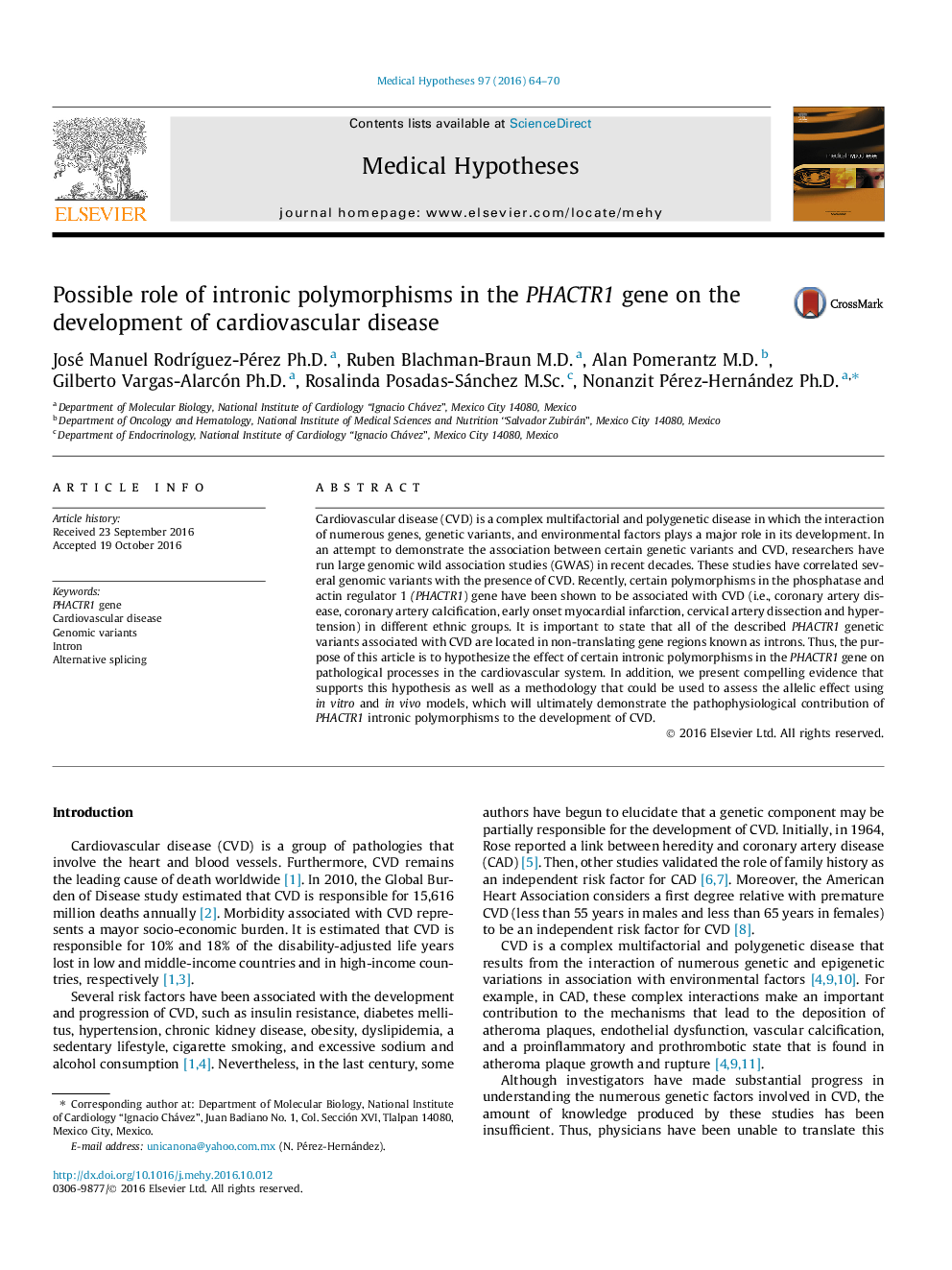| Article ID | Journal | Published Year | Pages | File Type |
|---|---|---|---|---|
| 5548675 | Medical Hypotheses | 2016 | 7 Pages |
Cardiovascular disease (CVD) is a complex multifactorial and polygenetic disease in which the interaction of numerous genes, genetic variants, and environmental factors plays a major role in its development. In an attempt to demonstrate the association between certain genetic variants and CVD, researchers have run large genomic wild association studies (GWAS) in recent decades. These studies have correlated several genomic variants with the presence of CVD. Recently, certain polymorphisms in the phosphatase and actin regulator 1 (PHACTR1) gene have been shown to be associated with CVD (i.e., coronary artery disease, coronary artery calcification, early onset myocardial infarction, cervical artery dissection and hypertension) in different ethnic groups. It is important to state that all of the described PHACTR1 genetic variants associated with CVD are located in non-translating gene regions known as introns. Thus, the purpose of this article is to hypothesize the effect of certain intronic polymorphisms in the PHACTR1 gene on pathological processes in the cardiovascular system. In addition, we present compelling evidence that supports this hypothesis as well as a methodology that could be used to assess the allelic effect using in vitro and in vivo models, which will ultimately demonstrate the pathophysiological contribution of PHACTR1 intronic polymorphisms to the development of CVD.
